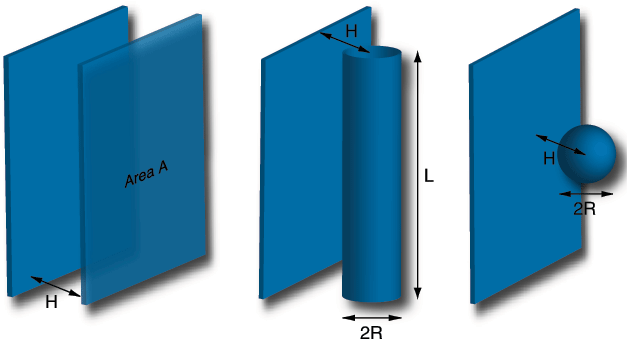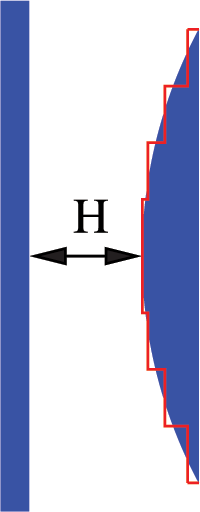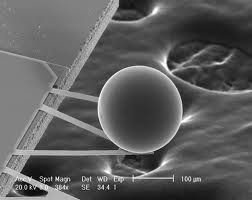
Proximity Force Approximation (PFA)

![]() This method, by Boris Dejaguin, relates the force between non-planar objects to the force between two parallel plates.
This method, by Boris Dejaguin, relates the force between non-planar objects to the force between two parallel plates.
If the force between parallel plates increases sufficiently rapidly with proximity, it is dominated by areas of closest approach,
within PFA approximated by adding contributions from opposing surface elements:



![]() is the energy per unit area of parallel plates at separation h.
is the energy per unit area of parallel plates at separation h.
![]() Originally introduced in the context of colloidal particles, this approximation has been extensively used in computing Casimir forces.
Originally introduced in the context of colloidal particles, this approximation has been extensively used in computing Casimir forces.
"On the attraction between two perfectly conducting plates," H.B.G. Casimir, Proc. K. Ned. Akad. Wet. 51, 793 (1948)


Comparison to experiments requires taking into account material properties of the boundaing surfaces, using Lifshitz theory
"The Theory of Molecular Attractive Forces Between Solids," E.M. Lifshitz, Soviet Physics 2, 73 (1956).
![]() The great majority of experiments measure the force between a sphere and a plate
The great majority of experiments measure the force between a sphere and a plate
"Demonstration of the Casimir Force in the 0.6 to 6µm Range," S.K. Lamoreaux, Phys. Rev. Lett. 78, 5 (1997)

"Precision Measurements of the Casimir Force from 0.1 to 0.9µm," (using atomic force microscopy)
U. Mohideen + A. Roy, Phys. Rev. Lett. 81, 4549 (1998) (offline)
Many other groups [Ederth; Bressi, Carugno, Onofrio & Ruoso; Decca, Lopez, Fischbach & Krause; ...]
![]() Accurate comparisons between theoretical models and experimental results require knowledge of corrections due to geometry.
Accurate comparisons between theoretical models and experimental results require knowledge of corrections due to geometry.
![]() What are systematic corrections to the Proximity Force Approximation?
What are systematic corrections to the Proximity Force Approximation?![]()